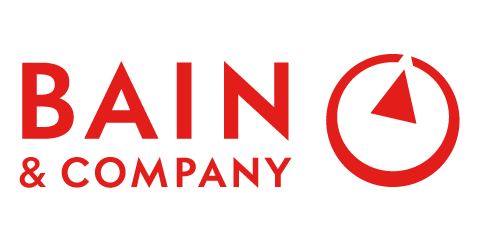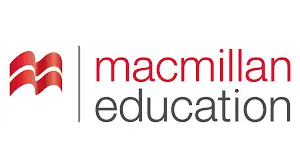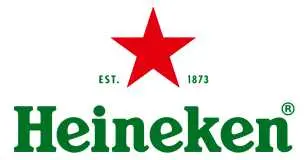
Gibberellins Market Size, Share, Trends, Growth and Forecast 2034
Gibberellins Market Size- By Type, By Crop Type, By Application - Regional Outlook, Competitive Strategies and Segment Forecast to 2034
| Published: May-2025 | Report ID: AGRI2508 | Pages: 1 - 230 | Formats*: |
| Category : Agriculture | |||
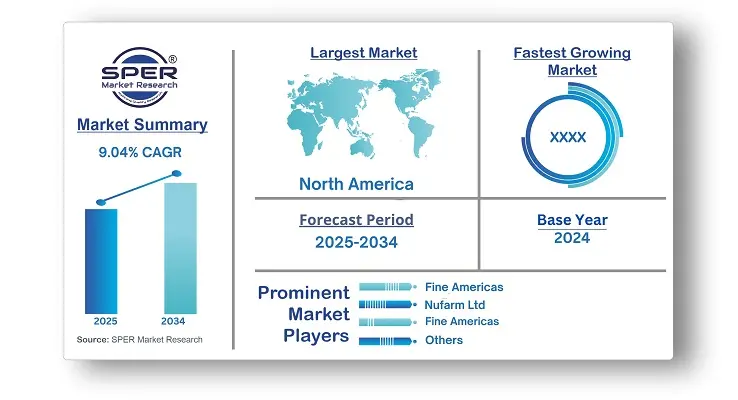
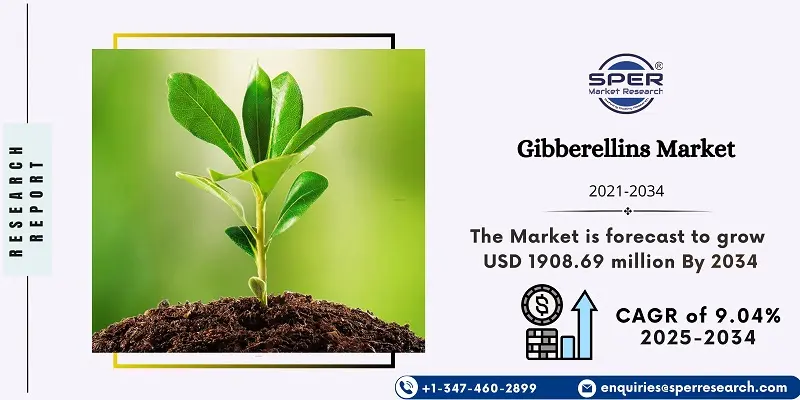
- In November 2023, PepsiCo, along with researchers from the Singapore-MIT Alliance for Research and Technology (SMART) and Temasek Life Sciences Laboratory, created advanced nanosensors that can detect and differentiate gibberellins (GAs), important plant growth hormones. These nondestructive sensors were tested on live plants and offer a new way to monitor early-stage plant stress. They could greatly aid precision agriculture and crop management, helping farmers improve yield and enhance plant biotechnology.
| Report Metric | Details |
| Market size available for years | 2021-2034 |
| Base year considered | 2024 |
| Forecast period | 2025-2034 |
| Segments covered | By Type, By Crop Type, By Application |
| Regions covered | North America, Latin America, Asia-Pacific, Europe, and Middle East & Africa |
| Companies Covered | Aroxa Crop Science Private Limited, Biosynth AG, Fine Americas, Inc, Hubei Yuancheng Saichuang Technology, Jiangsu Fengyuan Bioengineering Co., Ltd, Nufarm Ltd, SePRO Corporation, Shanghai Fuang Agrochemical Co., Ltd, Shanghai Pengteng Fine Chemical Co., Ltd, Sichuan Guoguang Agrochemical Co. Ltd. |
- Global Gibberellins Market Size (FY’2021-FY’2034)
- Overview of Global Gibberellins Market
- Segmentation of Global Gibberellins Market By Type (Gibberellic Acid, Gibberellins A4/A7)
- Segmentation of Global Gibberellins Market By Crop Type (Fruits & Vegetables, Cereals & Grains, Sugarcane)
- Segmentation of Global Gibberellins Market By Application (Seed Treatment, Foliar Spray)
- Statistical Snap of Global Gibberellins Market
- Expansion Analysis of Global Gibberellins Market
- Problems and Obstacles in Global Gibberellins Market
- Competitive Landscape in the Global Gibberellins Market
- Details on Current Investment in Global Gibberellins Market
- Competitive Analysis of Global Gibberellins Market
- Prominent Players in the Global Gibberellins Market
- SWOT Analysis of Global Gibberellins Market
- Global Gibberellins Market Future Outlook and Projections (FY’2025-FY’2034)
- Recommendations from Analyst
- 1.1. Scope of the report
- 1.2. Market segment analysis
- 2.1. Research data source
- 2.1.1. Secondary Data
- 2.1.2. Primary Data
- 2.1.3. SPERs internal database
- 2.1.4. Premium insight from KOLs
- 2.2. Market size estimation
- 2.2.1. Top-down and Bottom-up approach
- 2.3. Data triangulation
- 4.1. Driver, Restraint, Opportunity and Challenges analysis
- 4.1.1. Drivers
- 4.1.2. Restraints
- 4.1.3. Opportunities
- 4.1.4. Challenges
- 5.1. SWOT Analysis
- 5.1.1. Strengths
- 5.1.2. Weaknesses
- 5.1.3. Opportunities
- 5.1.4. Threats
- 5.2. PESTEL Analysis
- 5.2.1. Political Landscape
- 5.2.2. Economic Landscape
- 5.2.3. Social Landscape
- 5.2.4. Technological Landscape
- 5.2.5. Environmental Landscape
- 5.2.6. Legal Landscape
- 5.3. PORTERs Five Forces
- 5.3.1. Bargaining power of suppliers
- 5.3.2. Bargaining power of buyers
- 5.3.3. Threat of Substitute
- 5.3.4. Threat of new entrant
- 5.3.5. Competitive rivalry
- 5.4. Heat Map Analysis
- 6.1. Global Gibberellins Market Manufacturing Base Distribution, Sales Area, Product Type
- 6.2. Mergers & Acquisitions, Partnerships, Product Launch, and Collaboration in Global Gibberellins Market
- 7.1. Gibberellic acid (GA3)
- 7.2. Gibberellins A4/A7
- 8.1. Fruits & vegetables
- 8.2. Cereals & grains
- 8.3. Sugarcane
- 9.1. Seed treatment
- 9.2. Foliar spray
- 10.1. Global Gibberellins Market Size and Market Share
- 11.1. Asia-Pacific
- 11.1.1. Australia
- 11.1.2. China
- 11.1.3. India
- 11.1.4. Japan
- 11.1.5. South Korea
- 11.1.6. Rest of Asia-Pacific
- 11.2. Europe
- 11.2.1. France
- 11.2.2. Germany
- 11.2.3. Italy
- 11.2.4. Spain
- 11.2.5. United Kingdom
- 11.2.6. Rest of Europe
- 11.3. Middle East and Africa
- 11.3.1. Kingdom of Saudi Arabia
- 11.3.2. United Arab Emirates
- 11.3.3. Qatar
- 11.3.4. South Africa
- 11.3.5. Egypt
- 11.3.6. Morocco
- 11.3.7. Nigeria
- 11.3.8. Rest of Middle-East and Africa
- 11.4. North America
- 11.4.1. Canada
- 11.4.2. Mexico
- 11.4.3. United States
- 11.5. Latin America
- 11.5.1. Argentina
- 11.5.2. Brazil
- 11.5.3. Rest of Latin America
- 12.1. Aroxa Crop Science Private Limited
- 12.1.1. Company details
- 12.1.2. Financial outlook
- 12.1.3. Product summary
- 12.1.4. Recent developments
- 12.2. Biosynth AG
- 12.2.1.Company details
- 12.2.2.Financial outlook
- 12.2.3.Product summary
- 12.2.4.Recent developments
- 12.3. Fine Americas, Inc
- 12.3.1. Company details
- 12.3.2. Financial outlook
- 12.3.3. Product summary
- 12.3.4. Recent developments
- 12.4. Hubei Yuancheng Saichuang Technology
- 12.4.1. Company details
- 12.4.2. Financial outlook
- 12.4.3. Product summary
- 12.4.4. Recent developments
- 12.5. Jiangsu Fengyuan Bioengineering Co., Ltd
- 12.5.1. Company details
- 12.5.2. Financial outlook
- 12.5.3. Product summary
- 12.5.4. Recent developments
- 12.6. Nufarm Ltd
- 12.6.1. Company details
- 12.6.2. Financial outlook
- 12.6.3. Product summary
- 12.6.4. Recent developments
- 12.7. SePRO Corporation
- 12.7.1. Company details
- 12.7.2. Financial outlook
- 12.7.3. Product summary
- 12.7.4. Recent developments
- 12.8. Shanghai Fuang Agrochemical Co., Ltd
- 12.8.1. Company details
- 12.8.2. Financial outlook
- 12.8.3. Product summary
- 12.8.4. Recent developments
- 12.9. Shanghai Pengteng Fine Chemical Co., Ltd
- 12.9.1. Company details
- 12.9.2. Financial outlook
- 12.9.3. Product summary
- 12.9.4. Recent developments
- 12.10. Sichuan Guoguang Agrochemical Co. Ltd
- 12.10.1. Company details
- 12.10.2. Financial outlook
- 12.10.3. Product summary
- 12.10.4. Recent developments
- 12.11. Others
SPER Market Research’s methodology uses great emphasis on primary research to ensure that the market intelligence insights are up to date, reliable and accurate. Primary interviews are done with players involved in each phase of a supply chain to analyze the market forecasting. The secondary research method is used to help you fully understand how the future markets and the spending patterns look likes.
The report is based on in-depth qualitative and quantitative analysis of the Product Market. The quantitative analysis involves the application of various projection and sampling techniques. The qualitative analysis involves primary interviews, surveys, and vendor briefings. The data gathered as a result of these processes are validated through experts opinion. Our research methodology entails an ideal mixture of primary and secondary initiatives.
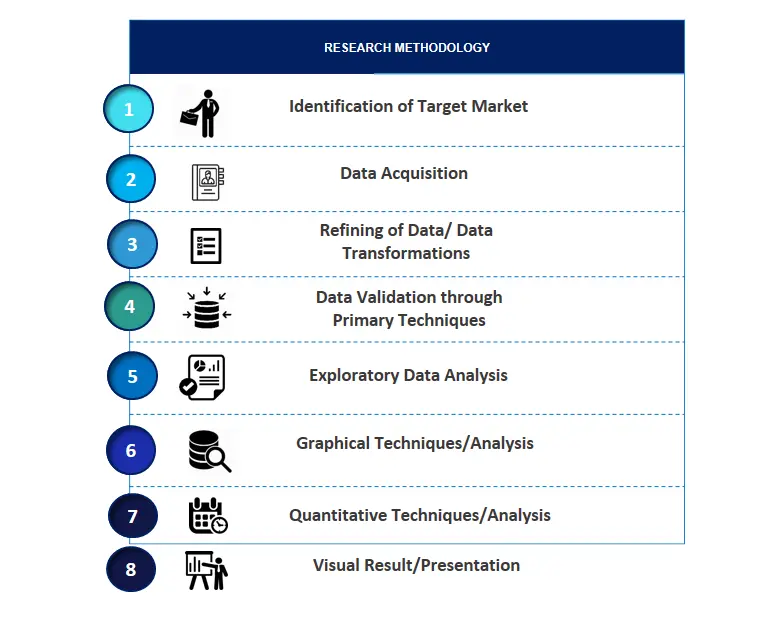
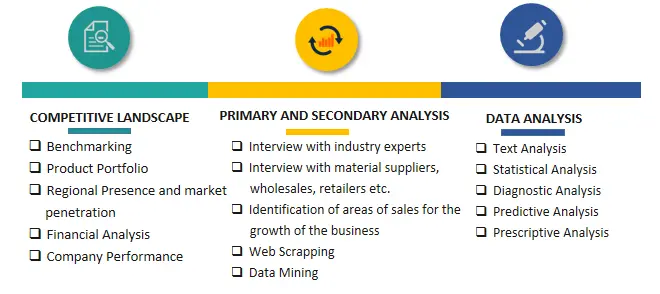

Frequently Asked Questions About This Report
PLACE AN ORDER
Year End Discount
Sample Report
Pre-Purchase Inquiry
NEED CUSTOMIZATION?
Request CustomizationCALL OR EMAIL US
100% Secure Payment

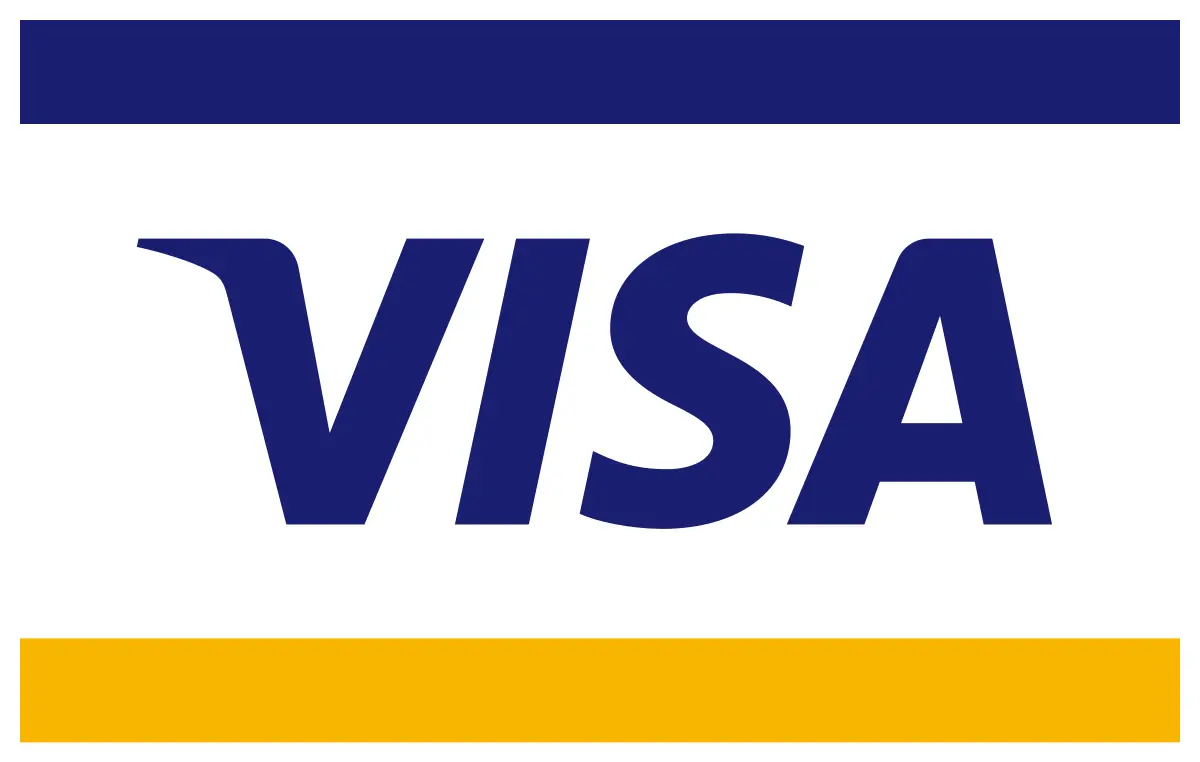




Related Reports
Our Global Clients
Our data-driven insights have influenced the strategy of 200+ reputed companies across the globe.







